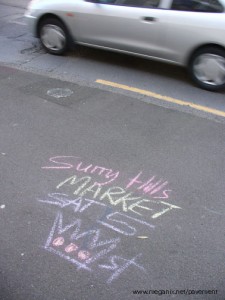This week I chanced upon Pete McLean’s blogsite Art and About. Pete really does like to get about – in the natural landscape, that is – and his beautiful artworks include wood engravings as well as prints and rubbings from objects he picks up outdoors, such as bits of wood, mushrooms and leaves.
From time to time Pete makes ephemeral artworks in situ, composing handfuls of dried grass on a hillside, for example, or rearranging a drift of snow. But surprisingly he is also interested in the urban pavement and sometimes traces around fallen leaves on the footpath with chalk. For me it is interesting to discover one of those artists whose works you sometimes come across on the pavement without ever knowing who did them, or why.
But the blog post that originally caught my eye was a photograph of what Pete calls ‘concrete fossils, those special places in the suburban landscape where traces of leaves and other life have been recorded in the man made lithosphere’. Pete’s photographs reminded me of some I had taken in Stanmore (Sydney) a few years ago.
I made a comment on Pete’s site, he replied, and I decided to write this post. But when I returned to his site to check that I had got things right, I found he had already written a post about Pavement Graffiti. Such is the incestuous world of the blogosphere. Thanks Pete and best wishes with your lovely creations.



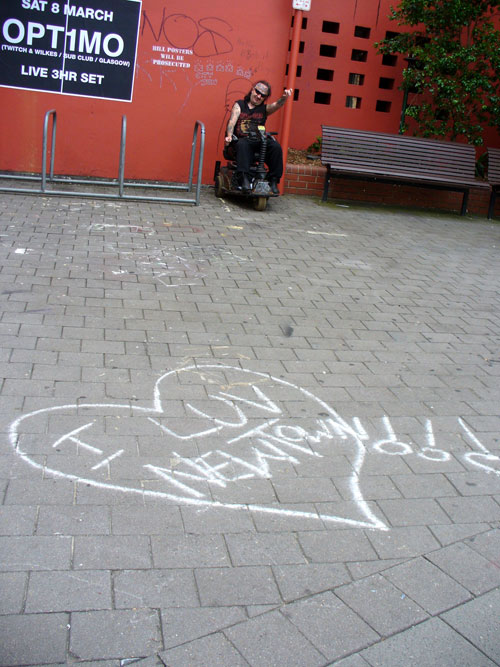

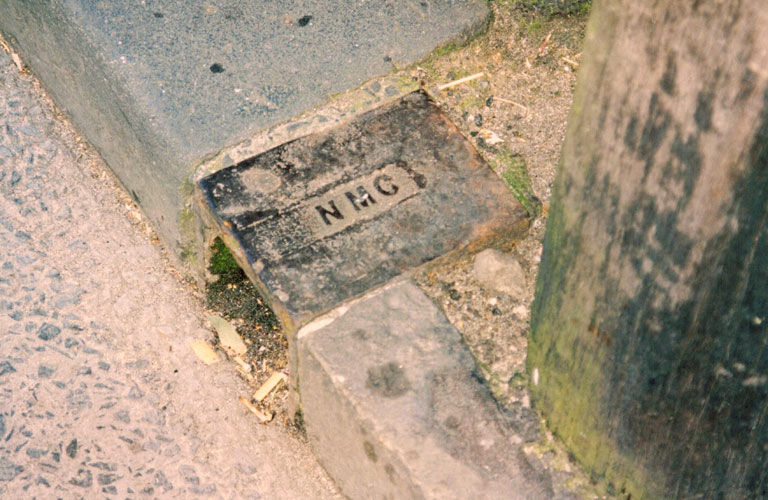



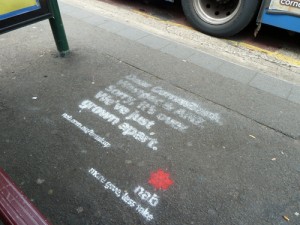



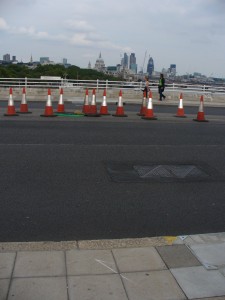

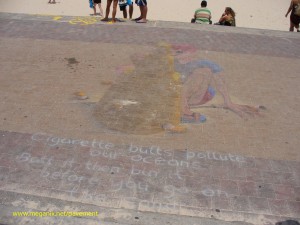
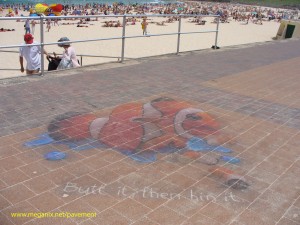
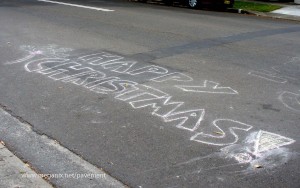
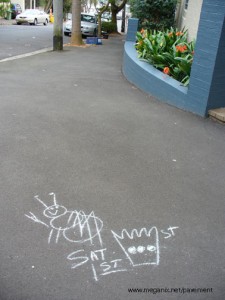 I figured this sign was not meant for me. Some private joke or invitation, but still I was intrigued. Sat 1st? Yes, I got that – the previous Saturday was August 1st. Queen Street? King Street? Crown Street? No streets of that name anywhere near this spot, the corner of Ross and Hereford Streets, Forest Lodge (Glebe). And as for the upbeat insect? Â No idea.
I figured this sign was not meant for me. Some private joke or invitation, but still I was intrigued. Sat 1st? Yes, I got that – the previous Saturday was August 1st. Queen Street? King Street? Crown Street? No streets of that name anywhere near this spot, the corner of Ross and Hereford Streets, Forest Lodge (Glebe). And as for the upbeat insect? Â No idea.